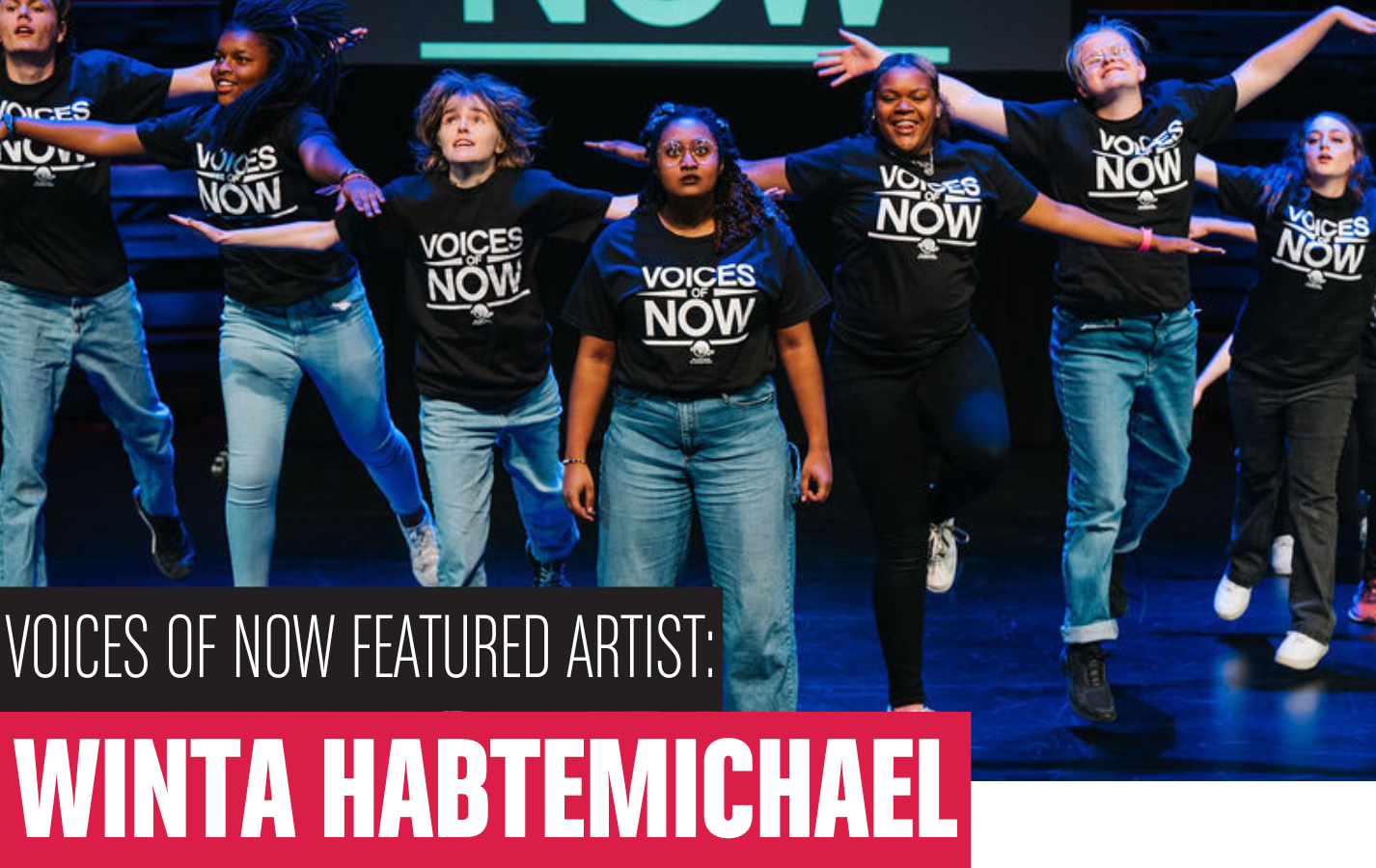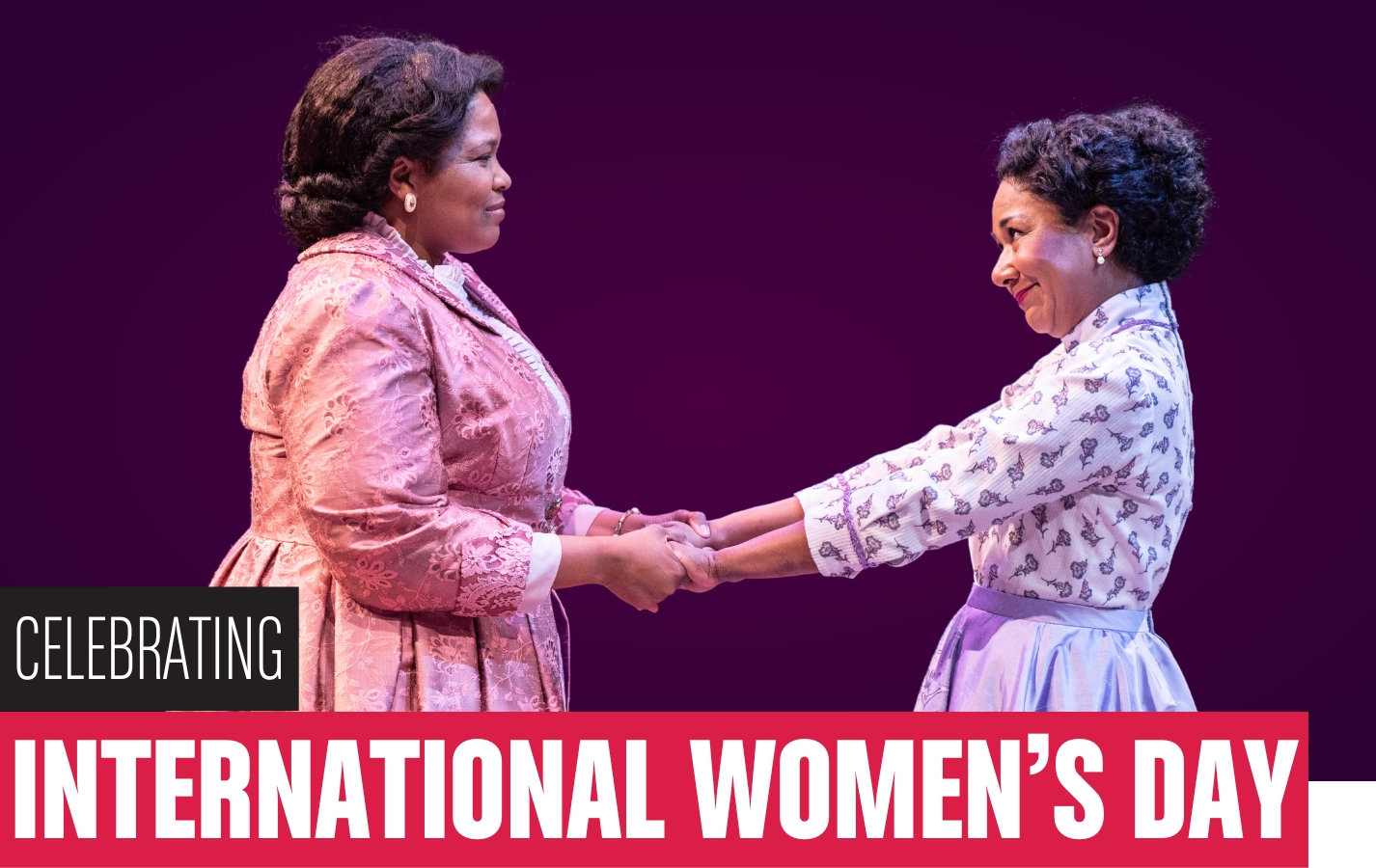
Voices of Now (VON) is listening to a song your friend recorded using your lyrics for the first time, and crying.
The song was called “Stuck in Your Head.” I worked on it with fellow member of the 2021/22 Mentor Ensemble, Reed Roddy-Johnson, during the process of devising that year’s play, HeadSpace. My original poem explored an image of me laying in my bed singing to myself in order to keep ugly thoughts away. Reed created chords and a chilling, beautiful melody and sent me a file of the recording. I listened. And I couldn’t keep myself together.
How can you sit and believe the world isn’t made with love when someone crafts the most heart-wrenching song as a present just for you? You can’t.
In Voices of Now, I am constantly re-learning the legitimate, tangible power of loving other people.
In Voices of Now, I am constantly re-learning the legitimate, tangible power of loving other people. Our plays—created by several ensembles in the D.C. area as well as internationally—constantly center around identity and care. How do we learn to effectively know ourselves? How can we know others, help others? When should we, when shouldn’t we, and how do we know the difference? Our goal is not just to pose these questions to ourselves, but ask the audience to consider their own answers. Voices of Now artists practice artistic vulnerability in order to create change within our communities.
But how? The process of crafting a 25- to 30-minute original play alongside other middle and high school artists involves hard work and a lot of joy. Ensembles range in size from three to twenty people, and everyone enters the process with a different context and understanding of what theater can be. In a technical sense, what theater is for Voices of Now includes an opening movement piece set to music, which introduces the audience to the emotional atmosphere and themes of the play; several autobiographical stories told by the ensemble; “sets” and environments created solely by the bodies of the performers on stage; questions posed to the audience between stories that provide a through-line and entry points to a larger inquiry; and no props—ever. (Except that one time. But we don’t talk about that.)
In practice, Voices of Now is about taking care of each other. No matter the size or makeup of an ensemble, the end product is (generally speaking) the same. We all learn the same warm-up, and we all grow to understand how our plays will likely look in their final form. But getting there takes team-work. Or more accurately: ensemble-work.
“Stuck in My Head” never ended up being finished in time for the final production. And that’s okay. Reed and I had created something beautiful together through care and thoughtfulness, and no matter what happened to it after, that little song changed my life. A lot of the raw materials created during the Voices of Now devising process don’t make it to the final show—but that was never really the point, anyway. Of course we are working towards a production, towards the Voices of Now Festival in May, but that play was never going to include every thought, feeling, or movement phrase created during the process. In my opinion, it shouldn’t! Devising, especially with Voices of Now, is not about the end product—though that product contributes greatly to the community and inspires real, true change. Crafting a Voices of Now piece instead centers the ensemble.
So much of theater for young people self-describes as “educational,” as though non-adults can only create as students instead of artists and experts in the room. In contrast, Voices of Now encourages young people to learn about themselves as human beings. We explore our thoughts, our emotions, as researchers on equal footing with our directors. We explore issues within our communities and apply real-life experience to shape an understanding of how we can possibly help. VON artists have agency. And that power can do so much good to a group of people who are consistently told they know less than the adults around them.
In the lyrics for our song lie these words: “A nightmare’s only a nightmare / If you’re not in control / But sometimes to be happy / You have to let it go.” This dichotomy between agency and freedom still speaks to me. Voices of Now artists must learn to take control of their art (and by extension, their lives) because out on that stage we only have ourselves and each other. At the same time, we must always be flexible to the will of the ensemble. What happens, happens, and each of us must always be ready to support everyone else. An ensemble breathes together, works together, performs together, and lives together. We all have trust, so so much trust—surrendering to the wave of each other’s instincts.
Voices of Now: a process of creative empathy. Reading someone else’s words and gifting them music in return. Feeling a missed step and masking it with your own movement. Writing, singing, drawing, sculpting, creating something messy and structured and concise and expansive that asks everyone involved to question the world around them.
So, what is VON? It is art. And it is love.




